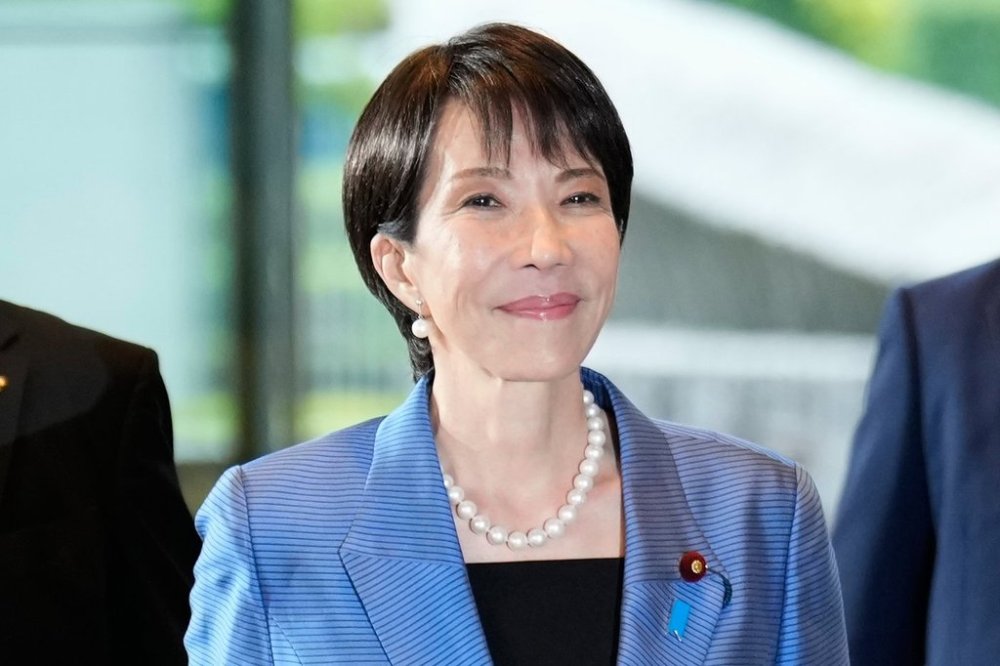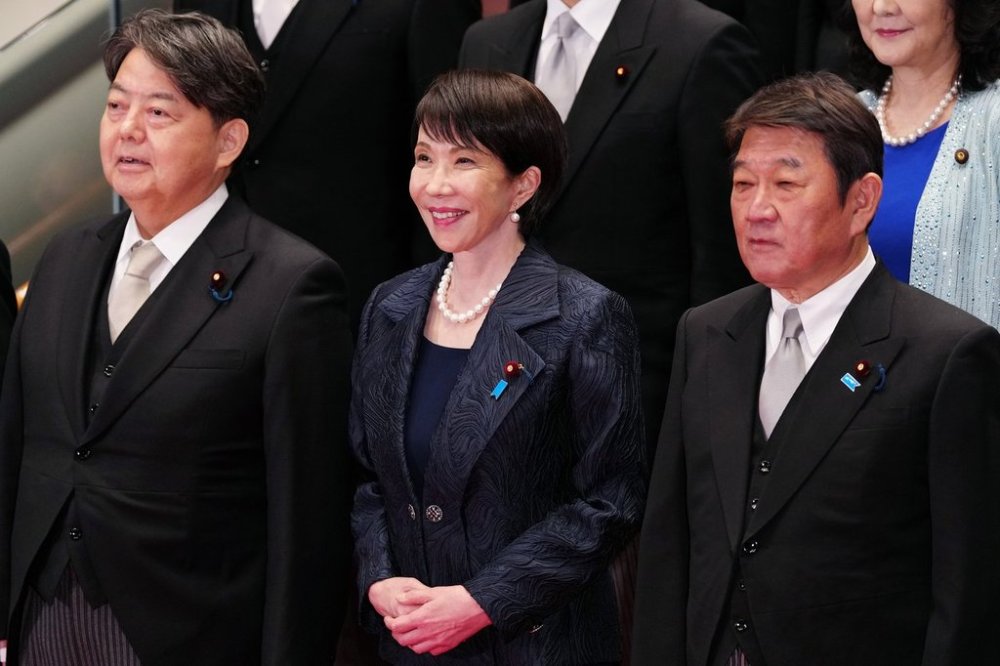Japan’s first female leader is an ultraconservative star from a male-dominated party
Advertisement
Read this article for free:
or
Already have an account? Log in here »
To continue reading, please subscribe:
Monthly Digital Subscription
$1 per week for 24 weeks*
- Enjoy unlimited reading on winnipegfreepress.com
- Read the E-Edition, our digital replica newspaper
- Access News Break, our award-winning app
- Play interactive puzzles
*Billed as $4.00 plus GST every four weeks. After 24 weeks, price increases to the regular rate of $19.00 plus GST every four weeks. Offer available to new and qualified returning subscribers only. Cancel any time.
Monthly Digital Subscription
$4.75/week*
- Enjoy unlimited reading on winnipegfreepress.com
- Read the E-Edition, our digital replica newspaper
- Access News Break, our award-winning app
- Play interactive puzzles
*Billed as $19 plus GST every four weeks. Cancel any time.
To continue reading, please subscribe:
Add Free Press access to your Brandon Sun subscription for only an additional
$1 for the first 4 weeks*
*Your next subscription payment will increase by $1.00 and you will be charged $16.99 plus GST for four weeks. After four weeks, your payment will increase to $23.99 plus GST every four weeks.
Read unlimited articles for free today:
or
Already have an account? Log in here »
TOKYO (AP) — Sanae Takaichi, a star of ultraconservative Japanese politics and a rare woman to rise in its male-dominated hierarchy, has been elected the country’s first female prime minister.
Takaichi, 64, is also the first woman to lead the Liberal Democratic Party that has dominated Japan’s postwar politics almost without interruption.
She admires former British Prime Minister Margaret Thatcher and is a proponent of former Prime Minister Shinzo Abe’s conservative vision for Japan. A China hawk, she is a regular at Yasukuni Shrine, seen by China, the two Koreas and other Asian victims of Japan’s World War II aggression as a place that glorifies the country’s wartime past.
The leader of a country that ranks poorly internationally for gender equality, Takaichi had rarely mentioned the issue during the campaign. She did remark after winning the presidency of the ruling party: ”Now that the LDP has its first female president, its scenery will change a little.”
First elected to parliament from her hometown of Nara in 1993, she served in key party and government posts, including minister of economic security, internal affairs and gender equality, though her diplomatic experience is thin.
She has called for a stronger military, more fiscal spending for growth, promotion of nuclear fusion, cybersecurity and tougher policies on immigration.
Takaichi is a known hard worker
As a student, Takaichi was a drummer in a heavy-metal band and rode a motorcycle.
She says she’s a workaholic who would rather work at home than go out and socialize. But after two unsuccessful bids to lead the LDP, she says she’s made efforts to build more connections with colleagues.
She asked all party lawmakers to “work like a horse.”
“I will abandon the word ‘work-life balance.’ I will work, work, work and work,” she said in comments that sparked strong, if mixed, online reactions.
Struggling for recognition in the male-dominated party

Female lawmakers in the LDP have often been passed over for ministerial posts, or been pushed aside if they spoke up about diversity and gender equality. Women hold only about 15% of the seats in Japan’s lower house, the more powerful of the two parliamentary chambers. Only two of Japan’s 47 prefectural governors are women.
Takaichi has avoided talking about gender issues in the past, sticking with old-fashioned views favored by male party heavyweights.
She had vowed to significantly increase the number of women in her government, but on Monday she appointed just two as ministers and a third as one of her three special aides.
She supports the imperial family’s male-only succession, and opposes both same-sex marriage and amending the 19th-century law that requires married couples to have the same surname.
“Ms. Takaichi’s policies are extremely hawkish, and I doubt she would consider policies to recognize diversity,” said Chiyako Sato, a political commentator and senior writer for the Mainichi newspaper.
Apparently because of her views on gender and diversity, support for Takaichi among women is lower than that of men in media surveys, Sato said.
Still, many see her breaking the glass ceiling in politics as progress.
Takayuki Eguchi, a 62-year-old Tokyo resident, said he had doubted that a woman would ever get to be prime minister and said her election created hope and expectation given the difficulty women still face in Japan.
“I really hope she serves for a long time, and that the political stagnation we’ve been seeing finally starts to move, and that things improve in Japan and in the eyes of the world,” Eguchi said.

The prime minister’s hard-right views on history and security
Takaichi is expected to move the government to the right, especially after forming an alliance with the right-wing Japan Innovation Party, or Ishin no Kai. The previous partner, the Buddhist-backed moderate Komeito, left the coalition in protest of Takaichi’s ultraconservative views.
The departure of Komeito also could further embolden the LDP’s most powerful kingmaker Taro Aso, whose influence largely contributed to Takaichi’s victory in the party presidential race. Rightwing Aso once called the junior party leaders “cancer” when they resisted some defense buildup plans in the 2022 national security strategy.
She has resisted acknowledging Japanese wartime aggression and atrocities and denied that coercion was used against Korean laborers and women held as sexual slaves for Japanese troops. She was part of a campaign to remove references to wartime sexual slavery from school textbooks.
Her revisionist views may complicate ties with Beijing and Seoul, analysts say. Last week, apparently to avoid tensions, Takaichi sent a religious ornament to mark Yasukuni’s autumn festival instead of visiting the shrine in person. She said she plans to maintain stable ties with China and further strengthen security partnership with South Korea.

